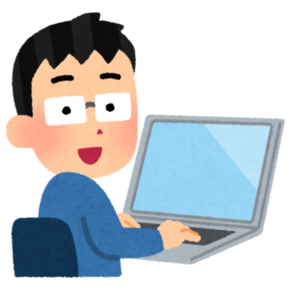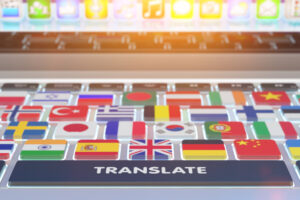Note: This blog post was originally written in Japanese for our Japanese website. We used our machine translation platform Translation Designer to translate it and post-edit the content in English. The original Japanese post can be found here.
"Is it possible to request translation from just a scanned document?"
"Can documents translated in the past be useful?”
For those who have questions regarding translation services, this post is a must-read. Whether you have been doing business with translation companies or don't have any experience using professional translation services, we'd like everyone to learn more about what kind of services translation companies can provide.
We will go over three commonly asked questions in this post!
Q1. The only data I have are scanned images of documents. Can I request a translation?
A1. Yes, you can request a translation even if you only have scanned images of your documents. It’s made possible by first converting the scanned documents into digitally encoded text data using optical character recognition (OCR) or other technologies.
Usually, you’ll be asked to submit an editable document file when requesting a translation, but there might be cases where you only have scanned documents or image files. It is not uncommon where those are the only data you can provide because the document was not created by you or because it was impossible to track down who created the document even if it was created within the company. Is it possible to request a translation even in such a case?
Scanned documents must be converted to text first to be translated. You can do this by manually retyping the entire document, but it can be more efficiently done by using OCR to digitally create a transcript and check it against the original document. Of course, we can take care of this for you. Once the text is digitally rendered, translation work gets underway. In this way, even if you only have scanned documents or image files at hand, you can still request a translation.

Q2. Is it possible to specify and have only certain parts extracted to be translated?
A2. Yes, we can efficiently extract the relevant part using a method called morphological analysis.
Due to budget and deadlines, there may be cases where you want translated only a specific part of the document, not the entire document. Normally, you should extract the relevant sections yourself and request a translation of only that part, but it may take a lot of time and effort. In such a case, is there any way out?
For example, suppose you have a huge volume of returned questionnaire results from which you want to translate only the answers that are negative in nature. You need to specify the relevant sections, but it will likely take a lot of time and effort. This is where a method called morphological analysis comes handy.
Morphological analysis breaks up words into morphemes, which are the smallest meaningful units of words. And then, after morphological analysis, we can pick up only adjectives, for example, and sort them into positives and negatives according to their content. In this way, we can efficiently specify the sections that are negative in nature and translate only these sections.
Kawamura International provides such data processing services to meet your needs at a reasonable price.
Q3. Are documents that were translated in the past of any use?
A3. You can make use of previously translated documents by utilizing them for translation memories and glossaries.
When it is necessary to tailor an instruction manual for international use, translation is normally done in-house or by a translation company. Often, once the instruction manual for international use is created and the purpose is achieved, the data from the translation may no longer be used.
However, documents translated in the past are actually valuable assets and can be useful for subsequent translation projects. Let’s see how they can be useful.
1. Translation memory
A translation memory, or TM, is a collection of bilingual data that has the original text and the translated text as a set. By effectively utilizing parts of the translation memory that can be recycled for a new translation, not only can the new translation be consistent with the existing one, but also the price and turnaround time can be reduced according to how much of the old translation is recycled.
Let’s imagine the instruction manual for a product that you have translated in the past has been updated. If you have a translation memory, you can go about translating while recycling the old translation wherever possible.
Even if you do not have a translation memory, we can create one for you from the original text data and the translated text data from the past. A translation memory can be generated by collating both sets of text data into pairs that have an original sentence and translated sentence each.
This set of bilingual data can be created manually, but there are also tools that can be efficiently used to automate the generation of a translation memory. By creating a translation memory from the past data, you can usefully feed it into all subsequent translation tasks.
2. Glossary
In a translation work setting, a glossary is a set of original and translated words, such as technical terms, which are paired at the term level. It is common for some documents, for example, technical documents of a product, to use a unique terminology. If they are not translated properly, they will have to be reworked at the proofreading stage, which can take a lot of hours. Therefore, when there are specific terms that have to be used for the product, our clients sometimes provide glossaries.
Usually, clients create glossaries themselves by listing the terms that they consider necessary based on the past translations.
A glossary is especially useful when translating a group of similar products, as the terminology needs to be consistent across all documents. However, listing terms can be a daunting task, and this is where we can help you. We will ask you about the criteria for selecting the terms, and then list the terms based on these criteria. We can also use tools and automate this process for efficient creation of the glossary.

This is how translated documents from the past can serve as your assets, and we are happy to advise on how you can build your own language assets and make use of them.
Summary
This time we shared how you can translate using OCR and morphological analysis, and about building your language assets. This FAQ blog series answers the questions about translation services that are frequently asked from our clients. Check out our previous post on urgent translation requests and benefits of working with agencies.
Kawamura's translation services
Kawamura International’s translation service covers a range of fields from IT to medical care, law, finance, patents, and more, and we support multilingual combinations for more than 40 languages.
We carefully listen to your concerns and help you choose the translation service that best suits your needs, whether it is machine translation, post-editing, or conventional human translation. We can also provide other various services such as editing video and audio data and localization in other languages.
If you are considering a translation request, would like a free quote, or have any questions or concerns, feel free to reach out us.
_CMYK_OL.png)


